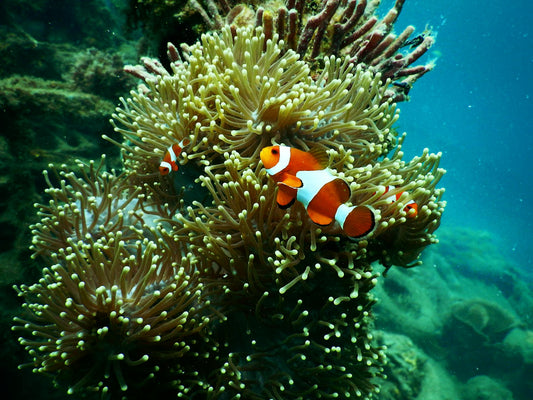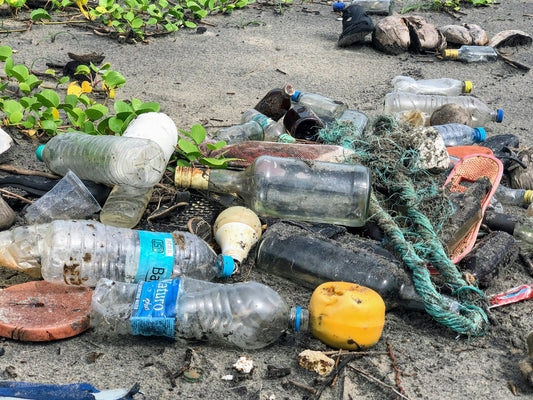Share
Cracking the Genetic Code of 'Forever Chemicals' on our Brains:
That jug of water or the non-stick pan you use may unwittingly house a "forever chemical" called Per- and polyfluorinated alkyl substances (PFAS). These compounds, believed to sit for eternities in water, soil, and surprisingly, our brains, are components of everyday items. Wouldn't it be great to unravel the ways these lasting tenants influence our brain mechanism?
11 Super Sleuth Genes Jump the Chemical Barrier:
In a novel study conducted by the University of Buffalo, scientists have identified not one or two, but 11 genes that offer some attractive insights into our brain's interaction with these always-there chemicals. The exciting bit? These genes are key players in vital neuronal health processes.
The scientific detective story reveals that these genes demonstrate peculiar behavior in the face of PFAS exposure, exhibiting increased or decreased expression, irrespective of the chemical compound tested. For instance, one key gene, vital for neuron survival, consistently showed lesser expression in the presence of all PFAS compounds.
Unlocking the Toxic Puzzle of PFAS:
However, if we think that's the entire story, well, not quite! The scientific narrative further becomes tangled as more genes enter the scene. Hundreds of other genes seem to change their expression, diverging in various directions. Interestingly, there appears no link between PFAS accumulation level in a cell and the extent it alters gene expression. This indicates that unique molecular structures within each type of PFAS drive changes in gene expression.
What does this mean? While PFAS may share some chemical similarities, their biological impact varies, implying that we shouldn't place them into a single group. Instead, they necessitate individual investigation.
PFAS and the Quest for Less-harmful Alternatives:
As this research shines light through the murky understanding about PFAS, it also underscores a reality: great substitutes for these compounds in applications like firefighting and semiconductor manufacturing, for example, are yet to be found. But fret not! Research like this provides crucial insights into why some PFAS are more harmful than others. The hope is to phase out the worst perpetrators while seeking safer substitutes.
Taking steps towards a healthier, less-toxic world where killer chemicals no longer play brain police may not be as far as we think! A great reminder that our best weapons are knowledge and understanding.
That jug of water or the non-stick pan you use may unwittingly house a "forever chemical" called Per- and polyfluorinated alkyl substances (PFAS). These compounds, believed to sit for eternities in water, soil, and surprisingly, our brains, are components of everyday items. Wouldn't it be great to unravel the ways these lasting tenants influence our brain mechanism?
11 Super Sleuth Genes Jump the Chemical Barrier:
In a novel study conducted by the University of Buffalo, scientists have identified not one or two, but 11 genes that offer some attractive insights into our brain's interaction with these always-there chemicals. The exciting bit? These genes are key players in vital neuronal health processes.
The scientific detective story reveals that these genes demonstrate peculiar behavior in the face of PFAS exposure, exhibiting increased or decreased expression, irrespective of the chemical compound tested. For instance, one key gene, vital for neuron survival, consistently showed lesser expression in the presence of all PFAS compounds.
Unlocking the Toxic Puzzle of PFAS:
However, if we think that's the entire story, well, not quite! The scientific narrative further becomes tangled as more genes enter the scene. Hundreds of other genes seem to change their expression, diverging in various directions. Interestingly, there appears no link between PFAS accumulation level in a cell and the extent it alters gene expression. This indicates that unique molecular structures within each type of PFAS drive changes in gene expression.
What does this mean? While PFAS may share some chemical similarities, their biological impact varies, implying that we shouldn't place them into a single group. Instead, they necessitate individual investigation.
PFAS and the Quest for Less-harmful Alternatives:
As this research shines light through the murky understanding about PFAS, it also underscores a reality: great substitutes for these compounds in applications like firefighting and semiconductor manufacturing, for example, are yet to be found. But fret not! Research like this provides crucial insights into why some PFAS are more harmful than others. The hope is to phase out the worst perpetrators while seeking safer substitutes.
Taking steps towards a healthier, less-toxic world where killer chemicals no longer play brain police may not be as far as we think! A great reminder that our best weapons are knowledge and understanding.
We hope you enjoyed this article. Please feel free to leave a comment below if you want to engage in the discussion.
If you want to read more like this, make sure to check out our Blog and follow us on Instagram. If you are interested in truly sustainable products, check out our Shop.
Check out the original source here.








